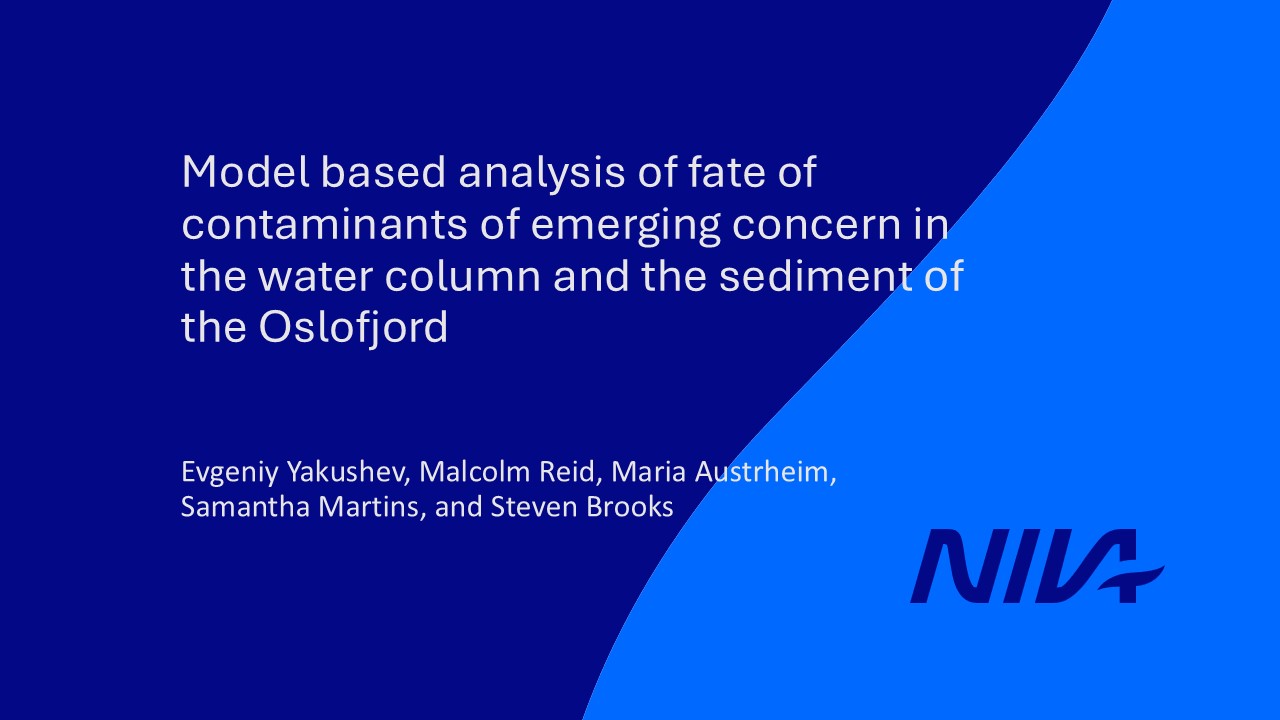Presentation at EGU 2025

Modeling the Fate of Emerging Contaminants in the Oslofjord – Insights from EGU 2025
At the European Geosciences Union (EGU) General Assembly 2025, our colleague Evgeniy Yakushev presented new modeling work on the environmental fate of contaminants of emerging concern (CECs) in the Oslofjord.
The study focused on six CECs—clarithromycin, citalopram, tributyl phosphate, benzotriazole, octocrylene, and teflubenzuron—selected for their contrasting chemical properties and widespread use in pharmaceuticals, industry, and personal care products.
Using a coupled FABM modeling framework, including the 2DBP benthic-pelagic model, the BROM biogeochemical model, and a specialized contaminant transformation module, the team simulated the behavior of these substances in both the water column and fjord sediments.
Key Findings:
- The biological pump plays a critical role in seasonal fluctuations of CEC concentrations.
- During periods of active pollution, both particulate and dissolved CECs tend to accumulate in sediments.
- Even after external inputs cease, dissolved CECs can continue to be released from sediments, affecting long-term water quality.
- The persistence and mobility of each contaminant are strongly influenced by its chemical properties, such as solubility, degradation pathways, and affinity to organic matter.
This research highlights the need for dynamic and long-term modeling approaches to assess the risks of CECs in marine systems and guide environmental management efforts.
The work was presented by Evgeniy Yakushev, with co-authors Malcolm Reid, Maria Austrheim, Samantha Martins, and Steven Brooks, and was funded by the CONTRAST Project (Horizon CL6-2023, Grant Agreement 101135037).
📩 For more information, contact: evgeniy.yakushev@niva.no

